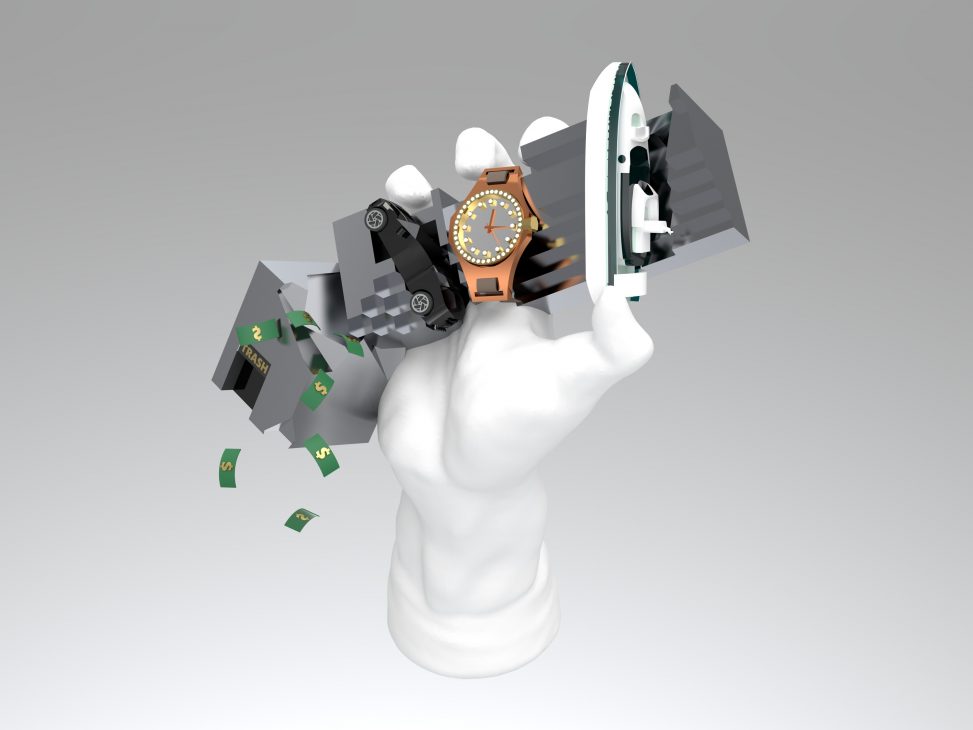Adam Smith’s “invisible hand” economic theory, in addition to market balancing, suggested that the rich will redistribute their wealth among the lower classes, allowing everyone equal access to resources, as if guided by a hand. In the modern day and age such a suggestion is laughable. It is no secret that the rich, despite making up a tiny fraction of the population, possess most of the world’s wealth. We live in a world where all our decisions must be made based on what will make us the most money. “Do what you love and you’ll never work a day in your life” is a dead myth as people grapple with a nonexistent job market, and those lucky to obtain a job work a taxing amount of hours. Housing is unaffordable. Minimum wage is inadequate. Food costs are rising. In 2015, 736 million people lived in extreme poverty. Where is the so-called “invisible hand”?
With a 3D scanned model of a print of Auguste Rodin’s The Mighty Hand, The Visible Hand clutches a tower (modeled after Trump’s NYC building) made of luxury items only owned by the most wealthy. The tower breaks apart in the hand’s powerful grasp, bleeding the wealth that they failed to redistribute. In this scenario, it is not the invisible hand that is being employed, but rather the very much visible hand of the people. The remaining 99% who are sick and tired of receiving scraps.
Kathryn Bower
